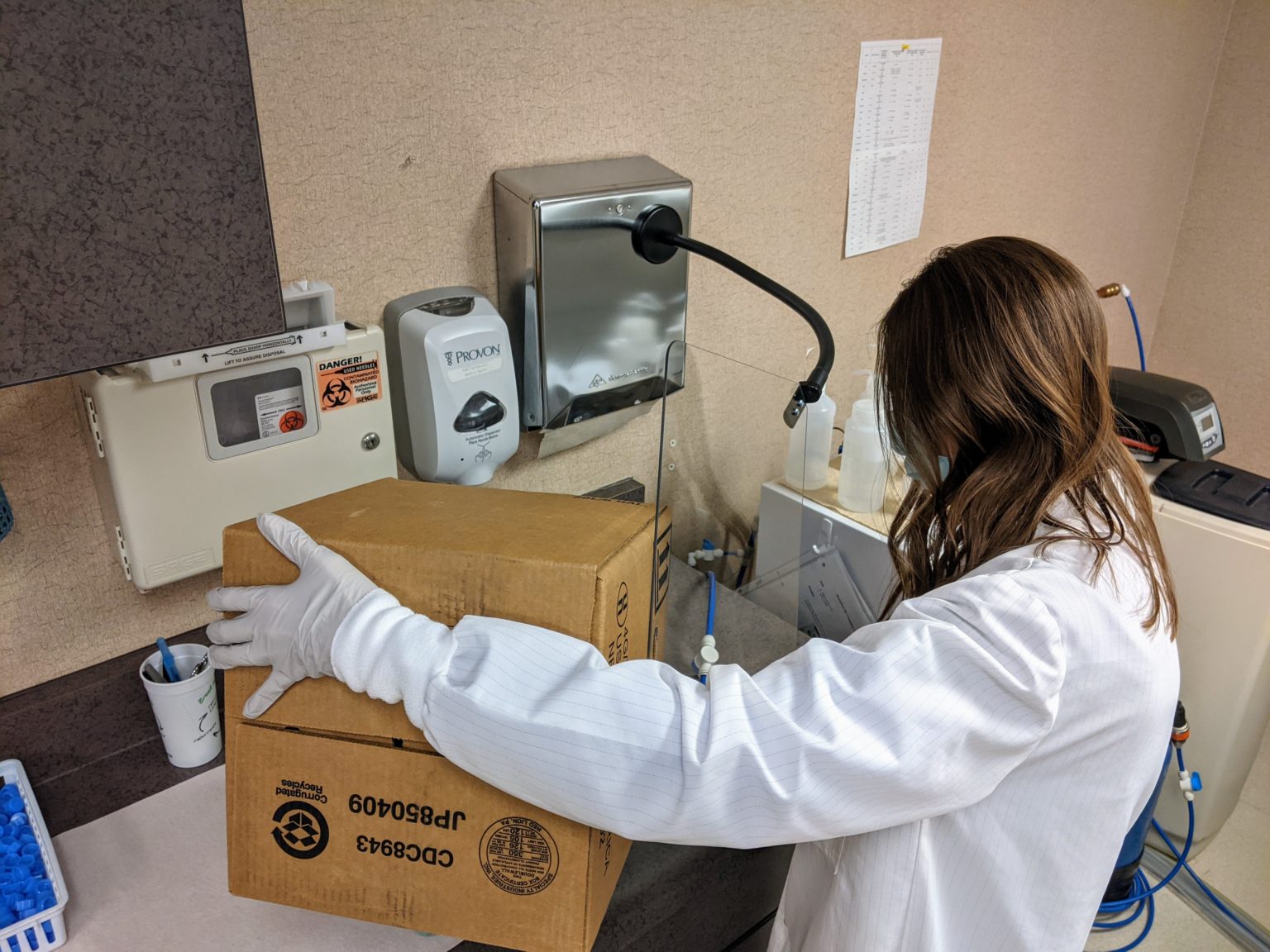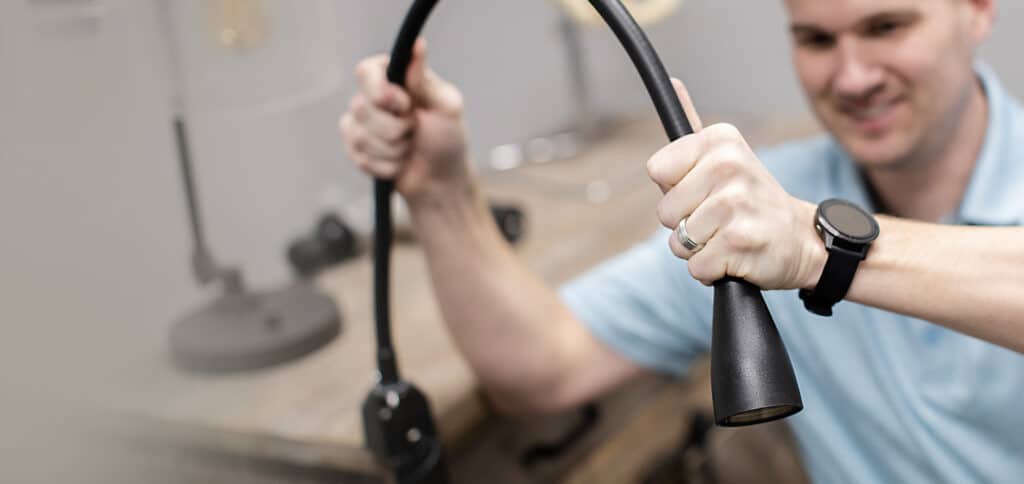How our flex arm prototyping process works

Share:
From your idea up to production (and beyond), here’s how we help realize your product
Your idea deserves the best shot at success. Over the years, we’ve developed a flex arm prototyping process that refines those ideas into a product that helps bring those ideas into reality. It’s tried and true and relies heavily on communication and collaboration. When you hire Moffatt, you’re bringing decades of product design experience to your team. Unlike other flex arm manufacturers, we’re there from the beginning – not just to offer components for your product, but to give advice, listen to your design challenges, and find a solution that works for everyone.
Understanding our flex arm prototyping process is nearly as important as understanding what a flex arm is in the first place! Here’s how we turn your idea into something tangible, real, and ready for the market.
Concept review
This is where you come in. Right from the beginning of our flex arm prototyping, we want to get YOUR take on what needs to be done. Our potential clients contact us with a need. It might not be doable, it might not even be feasible, but we’re not concerned with that right now. One of our engineers or design experts will walk through your idea with you, jot some notes, maybe draw something, and come up with a few ideas.
We don’t have a plan yet, but we have the beginnings of a plan. This phase is all about listening to our customers. Great ideas come from collaboration, that can only happen when we have an open and honest dialogue with you about where you see your project going next.
Our engineering team takes everything you’ve said, potential diagrams, and any brainstorming ideas and we spend a little bit of time with them. During that time we’re asking ourselves, can we solve this? Do we have the capability to produce and build what they need? This isn’t just an engineering question. We’ll ask, is the market truly a market?
From there we’ll come up with a couple of different solutions. We’ll bring it back to the customer and start the program initiation phase

Program Initiation
This is when we sit back down with our customers and talk about what we’ve come up with. It’s fairly straightforward. We’ll walk them through our ideas, and the solutions we created, and ask “Does this solve your issue?” If the answer is yes, then we’ll move on to the program approval phase.
If we bring our customers those solutions and they say it doesn’t solve our problem then we’ll go back to the concept review phase. While we say “go back” we don’t necessarily like to think of it as a setback. These are useful times when we can come up with additional concepts on how to solve their problem. We are going to keep coming back until we get that agreement from the customer and they say “Hey, this is the project we NEED to do.”
Program Approval
Program approval is one of the biggest stages of flex arm prototyping because that’s when WE say as a company, we’re investing in this product and this customer. We believe in our clients, they believe in our design, and we’re ready to go on a much more tangible level.
This is the part of flex arm prototyping where budgeting comes in. We’ll understand roughly what the cost will be to the customer. At this point, they’ll accept the cost targets – both for development costs and what the ramp-up costs may be. That’s not to say that things can’t change, but this should be pretty close to what those final totals will look like.
At this stage, the prototype is developed. It’s been tested, redesigned, etc. We typically go through multiple phases of prototypes.
- Phase One Prototype: A build with many 3D printed parts. It’s not close to production-ready. This is probably what most folks think of when they think of a prototype.
- Phase Two Prototype: A build with a few 3D printed parts, but the majority are production parts. There is some fine-tuning to be done, but we’re getting pretty close.
- Phase Three Prototype: A build that has no 3D printed parts. This is pretty much all production-ready components and is the final phase before we get to Okay to Build
Okay to Build
At this point, we’re almost done with our flex arm prototyping. We’ll do a final review. This basically looks like a checklist. We’ll run through how much weight the customer wants their flex arm device to be able to hold, how high the arm will have to reach, etc. This is also the phase when we’ll look at color matching and making sure that our flex arm fully integrates into the rest of your design needs. This can be especially important to medical devices that have very specific criteria for the look and feel of their device.

Production
We’ve reached the end of prototyping! We’ll be at the point where we’re building our first run of parts, of assemblies, and starting to ramp up production. So does this mean we’re done? Not hardly! Many devices go through several versions and designs. Different generations of the same product, or even a complete redesign depending on the needs of the end-user!
If your device ends up needing significant changes between versions, we may even totally restart the process. As a general rule, we say that anytime you change more than 30% of your content, it’s a new project.
So what’s the product that you and your team have been working on? We’d love to get the chance to talk to you about it. Let’s make your vision a reality.
